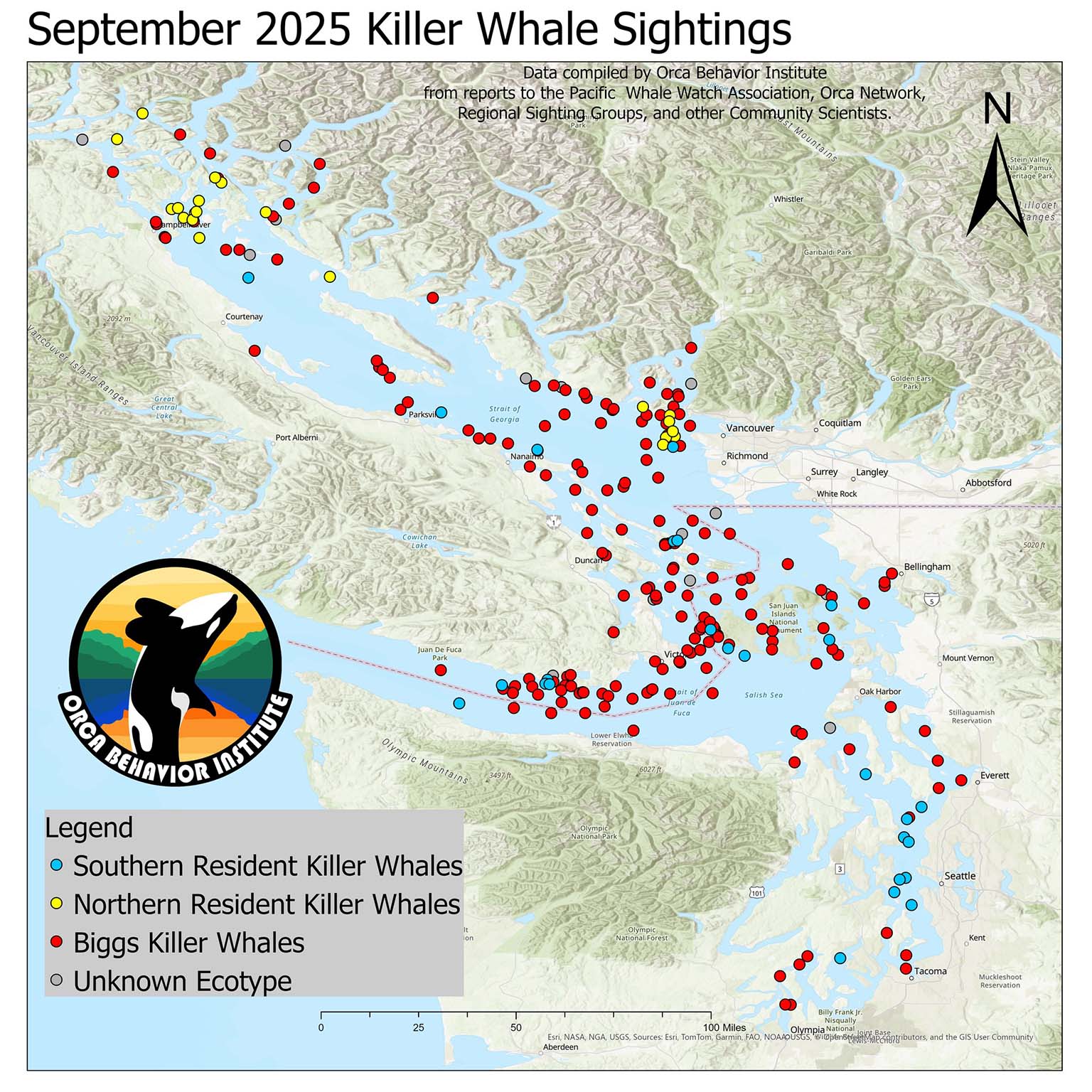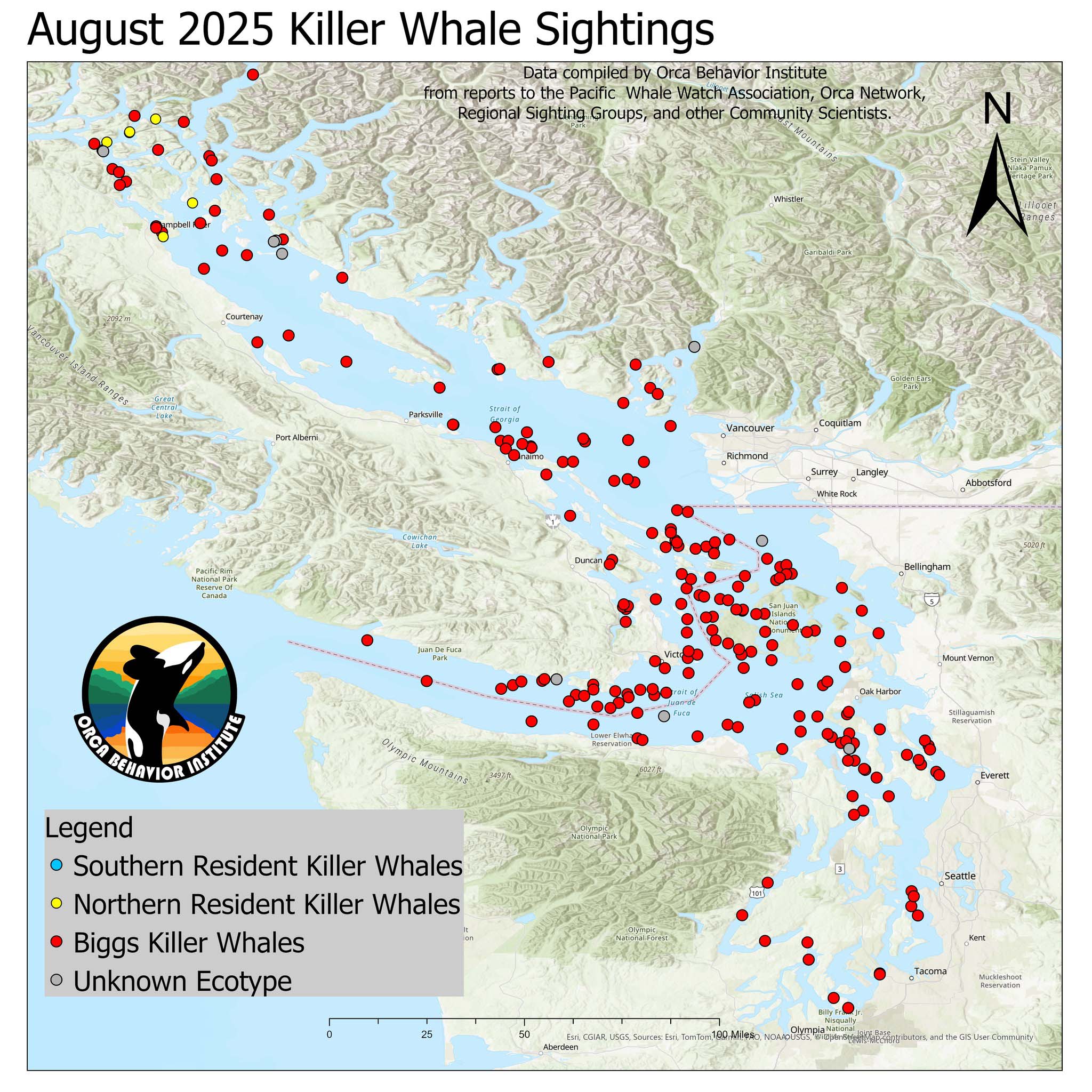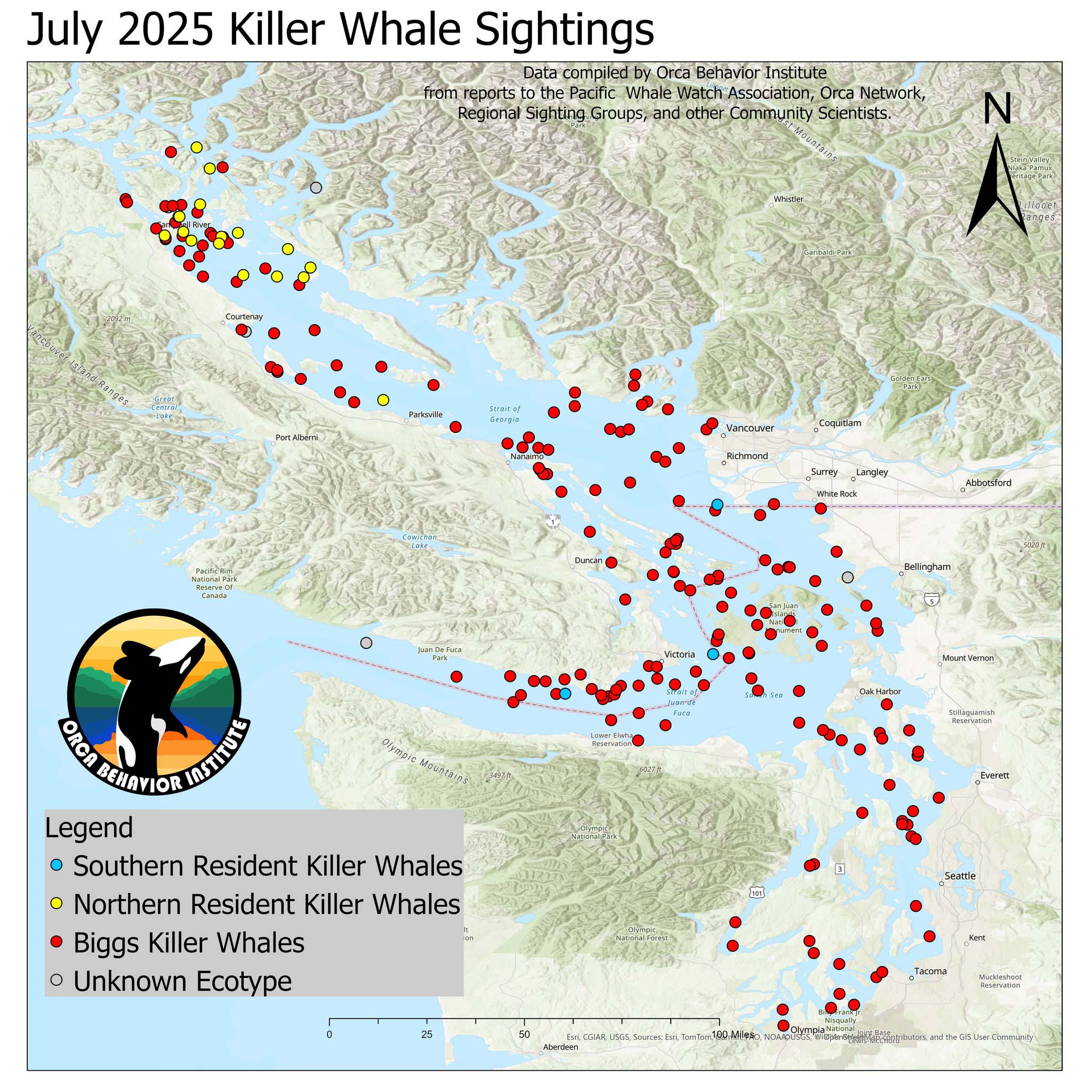March 2023
Here is our March 2023 Salish Sea orca sightings map, and what a month it was!
We had confirmed reports of J-Pod on 19 days in the month of March, but our speculated days (based on last known location and travel times, etc.) had them here for all 31 days of the month. They continued visiting some unusual places, with Bellingham Bay, Holmes Harbor, and Satellite Channel represented on the map here. K-Pod and part of L-Pod were seen off Monterey, California on March 18th, and we won't be surprised if we don't see any of them back in the Salish Sea until late June or early July.
The "spring influx" of Bigg's killer whales also commenced in full force, and not only did we have a lot of sightings but we had a lot of T Parties! Our informal definition of a T Party is 15+ whales from 3 or more matrilines, and by that definition we documented six such gatherings throughout the course of March including one group of at least 32 whales! In total, more than 100 individual Bigg's killer whales were confirmed in the Salish Sea on at least one day, including many of our Salish Sea regulars such as the T46s, T49As, T65As, T90s, T99s, T123s, and T137s. Bigg's were confirmed present on 29 days of the month.
J-Pod usually makes an early April exit from the Salish Sea and in recent years that absence has extended for one or two months or even longer. Last year, however, they returned a little more to their old patterns and weren't gone for more than a few weeks at a time, so we'll wait and see what they get up to this year. Meanwhile we often have Bigg's killer whales present every day in the month of April, and sometimes that consecutive day streak for Ts extends all the way through the summer!
These maps show the first confirmed location for every unique group of orcas reported each day throughout the Salish Sea, so they don't represent everywhere the whales traveled. Gray dots indicate sightings where orcas were confirmed, but it was not possible to determine ecotype (resident or Bigg's). This type of region-wide whale tracking is only possible thanks to the open collaboration and contributions from literally hundreds of whale enthusiasts throughout the region, so thank you as always to all of our community scientists who share reports via the Pacific Whale Watch Association, Orca Network, and through community sightings pages on social media.





